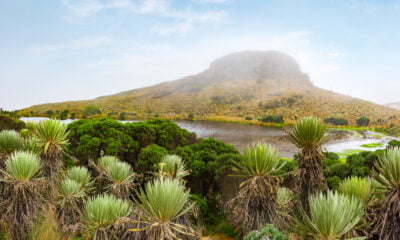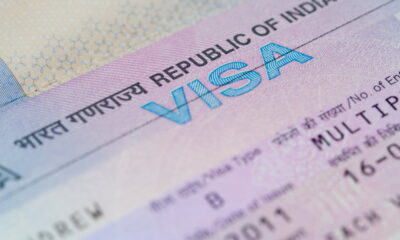

Environment
Indigenous Peoples from Amazon to Pacific Islands Hold Dialogues with Governments to Limit Climate Change, Ensure Rights in New Global Climate Agreement
Aspirations for a new global climate agreement in Paris next month hinge on commitments made by national governments to reduce greenhouse gas emissions known as Intended Nationally Determined Contributions (INDCs). However, Indigenous Peoples—who own, occupy or manage up to 65 percent of the Earth’s land surface—have been largely excluded from these national plans, according to new research.
But now the UN Development Programme, in partnership with the International Indigenous Peoples Forum on Climate Change (IIPFCC), is executing dialogues bringing indigenous leaders and high-level government officials together, often for the first time, to ensure that Indigenous Peoples’ priorities and perspectives are embedded in their countries’ negotiating positions for COP 21.
This pioneering initiative, underway in 21 countries around the world*, aims to ensure that the global climate agreement reached in Paris recognizes Indigenous land and natural resource rights, and the crucial role of Indigenous Peoples in climate change mitigation.
Research shows that secure rights to indigenous and community-held land protects against deforestation. Deforestation and other land uses represent 11 percent of global carbon dioxide emissions. A growing body of research points in the same direction.
“A persistent blind spot in the climate agenda has been the role of Indigenous Peoples in preventing deforestation and land degradation through their stewardship of vast areas of forest, grasslands and coastlines,” said Hindou Oumarou Ibrahim, a co-chair of the Global Steering Committee of the IIPFCC, and member of the Mbororo people in Chad. “In protecting these lands, Indigenous Peoples safeguard their own survival and deliver an enormous, unrecognized existing solution to climate change.”
Indigenous Peoples Largely Missing from National Climate Plans
A review by the Rights and Resources Initiative (RRI) of 47 INDCs found that only five specifically include indigenous and community land and forest management as part of their mitigation strategies; 16 mention it in passing; and 26 make no mention of it at all. And among the five, which include indigenous and community contributions in greater detail, only one, Cambodia’s INDC, calls for expanding the area of recognized rights as a strategy to better mitigate or adapt to climate change.
Furthermore, a UNFCC review of the 119 INDCs submitted as of 1 October, 2015, makes no mention of Indigenous Peoples. It finds that while many national plans mention emissions and mitigation actions in relationship to the Land Use, Land-use Change and Forestry (LULUCF) sector, only a few include specific targets or fully describe their approach to the sector. It finds that even with full implementation of all 119 INDCs, global temperatures would rise by approximately three degrees Celsius by 2030.
A World Resources Institute and Rights and Resources Initiative report estimates that forests owned and controlled by Indigenous Peoples and local communities contain approximately 37.7 billion tons of carbon—29 times more than the annual emissions of the world’s passenger vehicles. But the report also finds that more than 70 percent of all lands utilized or occupied by Indigenous Peoples lack legal protection, and are highly vulnerable to being seized by private companies, individuals and governments themselves, in a nonstop drive toward carbon-intensive investments in agriculture, logging, mining, oil and gas, dams and roads, and tourism.
“The same development that fuels climate change continues to rob Indigenous Peoples of their human rights,” said Victoria Tauli-Corpuz, UN special rapporteur on the rights of Indigenous Peoples, stressing the need to protect those rights and the traditional knowledge that has kept ecosystems healthy.
Dialogues between Indigenous Peoples and Government from Peru to Tanzania
UNDP, in partnership with the GEF Small Grants Programme, is supporting high-level dialogues between Indigenous Peoples and national governments to address issues that get to the heart of survival for Indigenous Peoples and provide an often rare opportunity for indigenous voices to be heard by decision makers in their countries.
Because Indigenous Peoples rely on land and natural resources in all aspects of life and survival, they are especially vulnerable to climate change. Arctic villagers have had to relocate due to melting permafrost; African pastoralists find their traditional migration routes and livestock imperiled by drought; forest peoples in Latin America face unprecedented wildfires. And in similar ways, Indigenous Peoples around the world are impacted by global climate change.
“Our forests clean the atmosphere, and we are their guardians,” said Peter Persaud, president of the Amerindian Action Movement of Guyana (TAAMOG), welcoming the opportunity of being consulted regarding Guyana’s national commitments to mitigate climate change.”
The dialogues have resulted in direct indigenous participation in national government delegations to the COP21 negotiations in Paris, as well as commitments from governments to take indigenous priorities to Paris and to report back to their countries’ Indigenous Peoples on the outcomes.
“The dialogue between Pacific Island governments and Indigenous Peoples has strengthened our partnership and resolve,” said Teanau Tuiono of the Pacific caucus. “We in the Pacific did not create climate change, but rising sea levels are putting islands and coastal communities under serious threat. Nonetheless, we are fighting. Not drowning.” Indeed, indigenous leaders united around the Suva Declaration on Climate Change at a Pacific regional meeting of IIPFCC in September.
Global Demands
Consultations among indigenous organizations have also taken place around the world.
Just last month, in Bonn, the IIPFCC issued key demands to be addressed in the final climate change agreement. The demands state that it is “imperative that Parties recognize and respect the rights of Indigenous Peoples to their lands, territories and resources, traditional livelihoods, sustainable resource management systems, cosmo-visions, and their Free, Prior and Informed Consent (FPIC), including the right to say ‘No.’”
It calls for the INDCs and the Paris Agreement to ensure the participation of Indigenous Peoples. Furthermore, it notes UNFCC findings that a global temperature increase of two degrees Celsius would fail to protect the food sources, local economies, resilience and survival of Indigenous Peoples. The IIPFCC therefore advocates to keep the climate from warming above 1.5 degrees Celsius.
– In Costa Rica, the dialogue paved the way for leaders of eight indigenous groups to meet with the president of the republic to determine indigenous representation at COP 21.
– In Panama, representatives of 12 Indigenous Peoples met with the ministry of the environment, and stressed the need for secure, legal rights to their lands. King Santana, a leader of the Naso people, spoke of the Bonyic hydroelectric dam on the Teribe River, which began operation earlier this year: “1,200 hectares were taken from us and used as hydroelectric concessions…We cannot take care of a land that can be taken from us at any time,” he said.
– In Tanzania, representatives of six Indigenous Peoples urged government representatives to allocate financial resources to counteract the adverse impacts of climate change and to adhere to the principle of FPIC, rather than handing indigenous lands to outside interests.
“Indigenous Peoples are bearing the brunt of climate change. It has greatly reduced water for people and livestock, caused the spread of invasive species that kill our pastures and the emergence of plant diseases that attack natural fruits, causing food insecurity,” said Edward Porokwa, a Maasai and advocate of the High Court of Tanzania. “Through the national dialogue, the Indigenous Peoples of Tanzania, have directly advocated for the changes we need, and the government has committed to addressing indigenous priorities regarding climate change and to continuing this dialogue.”
Several national dialogues are scheduled in the weeks ahead. The one taking place in Brazil, where implementation of the National Policy of Territorial and Environmental Management of Brazilian Indigenous Lands (PNGATI) is on the agenda, will be carefully watched, due to the fact that it will take place at a critical juncture for Brazil’s Indigenous Peoples.
Additional information can be found in: Rights and Resources Initiative. Who owns the world’s land? A global baseline of formally recognized indigenous and community land rights. September 29, 2015.
*Indigenous Peoples live in every world region and constitute a least 370 million individuals representing more than 5,000 distinct peoples. IP-government dialogues are being held in Brazil, Colombia, Guatemala, Costa Rica, the Dominican Republic, the Democratic Republic of Congo, Ethiopia, Fiji, Guatemala, Guyana, Indonesia, Liberia, Mexico, Niger, Panama, the Philippines, Peru, Russia, Tanzania, Thailand and Viet Nam.


 Environment10 months ago
Environment10 months agoAre Polymer Banknotes: an Eco-Friendly Trend or a Groundswell?

 Environment11 months ago
Environment11 months agoEco-Friendly Home Improvements: Top 7 Upgrades for 2025

 Features9 months ago
Features9 months agoEco-Friendly Cryptocurrencies: Sustainable Investment Choices

 Features10 months ago
Features10 months agoEco-Friendly Crypto Traders Must Find the Right Exchange





























